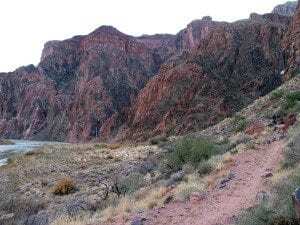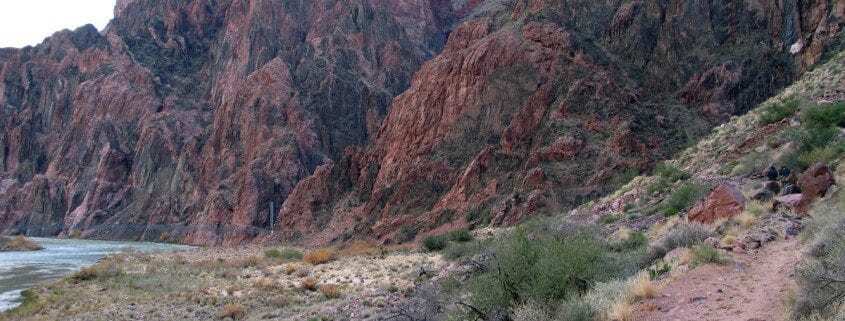Rock Your World With Grand Canyon’s Grand Geology
Carved with the keen eye of a sculptor, the steady hand of a surgeon and the imagination of a child, the Grand Canyon today, is a testament of natural art.

Photo by Steele Wotkyns
Craggy rock pillars, stratified hues, bold overhangs, a hypnotic interplay of sedimentary and metamorphic layers, outcroppings, steep cliffs, prominent promontories and many more signature features were all formed as a result of the combined efforts of water and wind erosion. Are you ready to travel back in time and see how the Canyon came into being? Hold on tight for the ultimate sightseeing tour.
A blue orb called the earth took shape 5 billion years ago. And the first layers of the Grand Canyon were laid about 1.7 billion years ago, in the form an ancient mountain range found at the bottom of the canyon today. A few billion years later, the first sedimentary layer known as the Bass formation was laid down. Evidence of Algae points out that this region was once coastal. The sea receded leaving behind mud flats which we know today as the Hakatai Shale. There is evidence of volcanic activity Between 1.25 and 1.1 billion years, in the form of Cardena basalts.
Sandstone, Limestone, and Shale were deposited between 550 -330 million years with a once again advancing ocean. Fossils of both flora and fauna provide a lot of evidence indicating that this region fluctuated between marine and terrestrial environments.
Eventually, the Rocky Mountains began to ascend and form around 60-70 million years ago, giving birth to the Colorado River. The tenacious and playful Colorado began to carve the Canyon at its Eastern end at Marble canyon. Working in tandem with the wind and ice, the gushing waters of the Canyon begin to shape the canyon into its distinctive topography through persistent erosion. In the colder months, the water would freeze over and while on melting, would carry tonnes of sediment along its path, becoming a formidable chisel that continued to chip away at the rocks. This erosion was aided by the uplift of the Colorado Plateau around 17 million years ago causing the river to cut deeper.
The continental Drift, not one to stand on the sidelines watching, came into play albeit at an agonizingly slow pace, bringing with it a shift of the earth plates and subsequently an upheaval of geological proportions. The North American Plate collides with the Pacific Plate; Oceanic plates get heavier and pull other plates toward them; The Pacific Plate slowly settles down beneath the North American Plate, superheating its rock, releasing hot water and forming lava which feed volcanic ridge. As these plates move towards one another, they sometimes buckle and mountain ridges are formed. This is how the Rockies came into existence.
If you are looking to choose a few Grand Canyon Attractions, visit the sites that have stood the test of time and continue to carve stories as we speak. Pick a custom Grand Canyon Geological Tour and deep dive into history.




